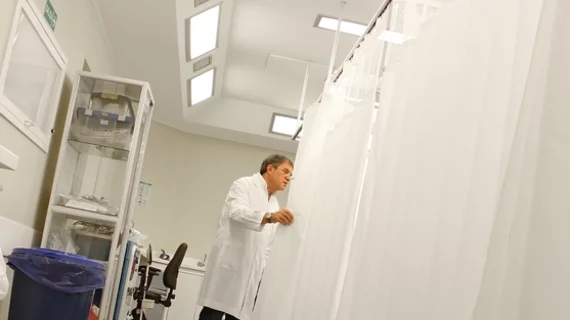Sunshine and rainbows and trauma: How weather can impact CT volume in EDs
This week at the annual RSNA meeting, the worlds of radiologists and meteorologists collided when researchers presented evidence of associations between certain weather conditions and patients presenting with polytrauma.
After analyzing nearly decade of weather and CT imaging data, researchers found that patients with multiple traumatic injuries who presented to the Emergency Department of the University of Basel did so most frequently during warmer, sunnier days during the summer months.
This finding is important because trauma patients account for a large number of hospital admissions and often require numerous imaging examinations with immediate interpretations. These patients frequently undergo whole-body CT scans, which can be cumbersome for radiologists tasked with reading them, explained study co-author Martin Segeroth, a radiology resident in the Department of Radiology and Nuclear Medicine at the University of Basel in Switzerland.
Having a better understanding of when instances of trauma might spike could be beneficial in terms of staffing, the authors suggested.
For their study, the researchers analyzed daily weather patterns, such as temperature, wind speed, cloud cover, sunshine duration and precipitation, from the years of 2011 to 2020. During this timeframe, a total of 4,613 polytrauma CT scans were performed at their Emergency Department.
The data revealed that whole-body CT scans were performed more frequently during warmer, sunnier days and that polytrauma CT volume decreased on colder, windier, cloudier days with less sunshine and less UV light.
The experts took their work a step further by inputting this data into multiple machine learning algorithms in an attempt to predict daily polytrauma cases. Their model proved effective, predicting 73% of the days when polytrauma volume was higher and 83% of the days when it was lower.
Although there were no technical data available to derive definitive conclusions, the experts suggested that the spike in polytrauma patients during the warmer months could be because people typically participate in more outdoor activities when the weather is warm.
Segeroth shared that the hospital is considering using this data to create a dashboard that alerts staff when higher than normal levels of trauma could be expected.
"Our results demonstrate that it's possible to partially forecast normal or above normal daily numbers of polytrauma CT volume based on weather data," Segeroth said. "Any approach that helps us be more prepared for polytrauma patients would improve resource planning in the ER and Radiology Department."
To learn more, click here.

